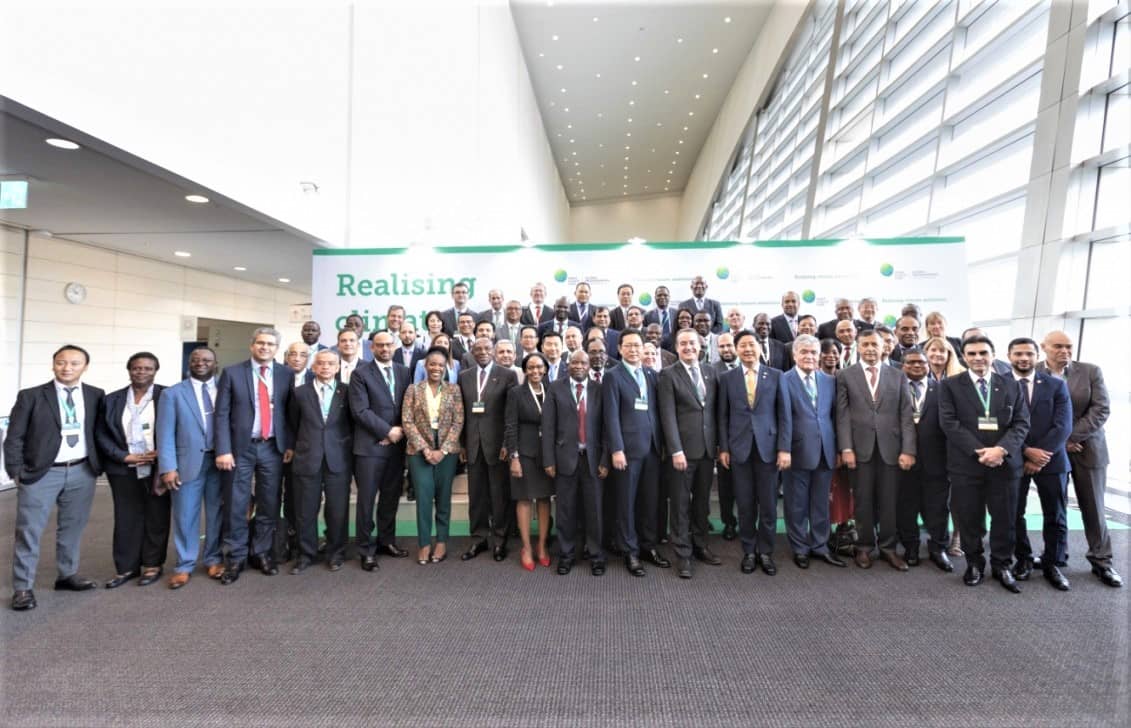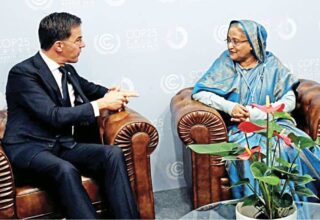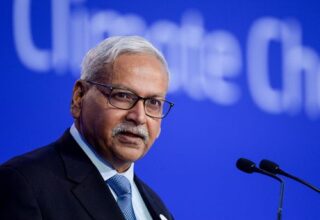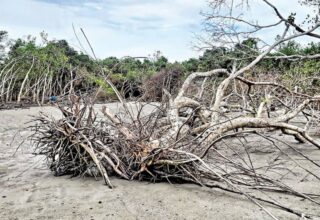
Last week the Green Climate Fund (GCF) held a weeklong Global Programming Conference at its headquarters in Songdo, Korea, with over five hundred participants from all over the world. The GCF has recently appointed a new Executive Director, Yannick Glemarec, and is also developing its new strategy and seeking replenishment after the first tranche of USD 10 billion runs out in a year.
I spent the week in Songdo talking to the new Executive Director and many of his colleagues at the GCF Secretariat, as well as to many delegates from the Least Developed Countries (LDCs) in particular.
I had been a frequent critic of the GCF in the past, not because I am against the GCF; rather because I have been disappointed by the slowness of its work and its failure to channel funding to the most vulnerable communities in the most vulnerable countries, despite the GCF board having made the laudable early decision to allocate half their funds for adaptation and prioritising the LDCs and Small Island Developing States (SIDS).
I was very pleased to see that my observations have also been repeated in the recent report by GCF’s own Independent Evaluation Unit (IEU), whose recommendations have been adopted by the GCF board at its last meeting.
I am sharing below some ideas and offering collaboration to help GCF fulfil its mandate with regard to supporting the most vulnerable communities in the most vulnerable countries going forward.
I will couch them in response to the four main recommendations made in the IEU report.
Increasing the role of direct access entities
The GCF has been allocating a significant amount of its funds through multilateral entities towards developing countries. However, one of the principles which the developing countries fought for and was adopted in GCF’s design was to allow direct access to national entities as well as multilateral entities. The progress on accreditation of national entities has been fraught with difficulties and hoops that the applying entities were made to jump through just to be accredited, followed by another set of hoops to actually get funding. Thus it has taken years to get even a small number of national accredited entities.
This has been a major flaw in both the design and implementation process in the past and I hope it will be streamlined going forward. One solution might include setting different levels or duration for getting accredited.
Until every developing country has enough national entities accredited, they will not be able to reap the benefits of GCF support at the scale that is needed to tackle climate change.
New strategic plan that positions GCF as a thought leader and policy influencer and establishes its reputation in innovation and addressing country needs
When it comes to adaptation practice and adaptation funding, the GCF has a long way to go if it wants to be a thought leader. There is a very strong adaptation science community globally which is working and learning about the basics of adaptation. They arrange a major global conference every alternative year called the Adaption Futures Conference, which will be held next in Delhi, India in 2020.
At the same time, the community-based adaptation (CBA) programme has also grown over the last 15 years and organises a conference every year. The 13th conference was held in Addis Ababa, Ethiopia in April this year and the 14th will be held in Bangkok, Thailand in June 2020 and the 15th in Dhaka, Bangladesh in June 2021. The GCF should actively participate in these events where adaption thought leaders come together and share their views.
The other element in this recommendation suggests GCF needs to focus more on creating and monitoring impact of the projects which are being funded by them. This is a major design challenge for the GCF whose only tool until now has been funding limited-time projects which it receives from countries and later it is left in a tangle of unrelated projects that don’t add up too much.
The GCF board must give the secretariat flexible resources to proactively engage in some more strategic level monitoring, evaluation and learning (MEL) at country level over time periods of 10 years and more, which is when post-project climate change impacts are expected to become more noticeable.
A good way to do this would be to partner with a university in each country (that can then be networked together to develop common methodologies) as well as existing networks of universities and think-tanks.
If GCF wishes to demonstrate longer-term, post-project impact at national level, such a long-term partnership with “learning Institutions” will be a good idea.
The GCF should re-emphasise its support for adaptation investments
This has by far been the major failure of the GCF to date regarding the volume of money allocated to adaptation (which should have been half the portfolio but was only a third), and reaching the most vulnerable communities.
It is good to see that the GCF has now prioritised both the LDCs and SIDS and held special sessions for each group in Songdo, last week. It is crucial that GCF also plans with them longer term collective engagement programmes (as opposed to only country-by-country and project-by-project approaches, which are in practice now).
With regard to global funding for adaptation, the GCF has to remember that it is not the only fund in town; there are the Adaptation Fund (AF) and the LDC Fund (LDCF) managed by the GEF who have a longer and more effective track record. So from the perspective of the LDCs, the GCF must improve and enhance its performance on adaptation funding if the LDCs would support its replenishment. A good way forward would be to join forces with the LDCF and AF to find synergies and gaps. My own view is that GCF’s comparative advantage would be in scaling up successful adaptation activities funded by other funds, rather than replicating what they are doing.
Recommending a greater delegation of authority that emphasises responsibility, agency and speed in delivering country climate needs
This focuses on developing longer term in-country strategic planning and capacity building to tackle climate change on the ground with adaptation as well as mitigation, e.g., by supporting projects that enable renewable energy in support of adaptation at community level.
In this regard, a good way forward would be to enter into strategic partnerships with a few (front runner) LDCs to take this devolution of decision-making to the national level.
Originally this article was published on August 28, 2019 at The Daily Star. The author Dr. Saleemul Huq is the director of the International Centre for Climate Change and Development (ICCCAD) at the Independent University, Bangladesh (IUB).
Email: saleemul.huq@icccad.net






